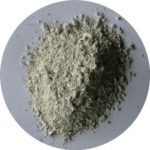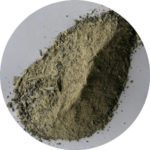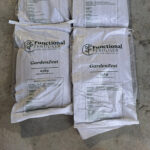P.W. Burton
Property markets react differently from region to region, however in our patch the rural real estate market is flat, with nothing much moving.
Dairy farms are particularly slow to sell. Buyers are reluctant to reduce prices, potential purchasers are stand-offish, and banks appear to be playing a waiting game.
If prices drop sufficiently for the market to pick up capital gains will be trimmed, which is sombre news for long-term owners wanting to retire, highly indebted operators, and banks.
The consensus seems to be that the farm market will stay flat for maybe the next three to five years before a sudden surge in sales which may or may not coincide with a period of rampant inflation.
This means that in the interim any financial short fall is less easily accommodated, and cash surpluses become the key to financial survival. It’s a situation that appears on a regular basis which no amount of wishful thinking or pulling of fiscal levers will ultimately change.
Rates are steadily increasing, and the outlay required to meet steadily tightening environmental standards is yet to be fully appreciated. All of which paints a somewhat bleak picture, however this is where genuine opportunities lie for those with foresight and the determination to prosper.
Pasture is the lowest cost and most valuable feed and yet annual production from mainstream conventional fertiliser programmes is steadily declining, and a poor growing season coinciding with lower than expected financial returns could spell the end of some farming careers.
What if it was possible to gain a 30% increase in pasture production over the next three years. Currently 14.0 tonne of dry matter per hectare is regarded as top tier performance from permanent grazed pasture.
What if that could be lifted to a tad over 18 tonne with no added cost? And better still, no ‘lag phase’, with increased growth available from day one.
There’s an old saying that if it sounds too good to be true it probably is, and in this instance there is a proviso. Pasture management will likely require a re-jig to maximise the potential, and the success lies in focussing on the intervals between grazing.
It takes a little time to get used to grazing pastures of longer length than is common, leaving a slightly clumpy appearance, and accepting the steadily changing plant composition of each paddock.
The plants that grow are the result of both soil chemistry and grazing management. A lift in plant available calcium can bring about a quite profound change in pasture composition as clovers have the environment in which to flourish.
Clovers replace the nitrogen necessary to sustainably grow 18+ tonnes of pasture annually. Because clovers fix nitrogen in response to declining nitrogen available for plant uptake it’s essential that no N is applied during the main growing season from early September until late March.
The calcium content of clover is up to four times higher than that of grasses, and calcium is the nutrient in greatest demand for lactating or rapidly growing animals. Applying lime will help, however as one of our scientists often reminds us most of our soils are rich in calcium.
Its plant-available calcium that is the key to the 30% gain available in pasture growth. Change always requires a catalyst and it’s a proprietary mix of beneficial fungi and bacteria that triggers an immediate lift in growth.
When applied in conjunction with lime, which provides the soil environment that allows them to flourish, soils soften, dung breaks down more rapidly, and the speed at which the rapid organic cycle operates increases.
The science behind this is now well documented and it’s come from the work done by our own research institutes over the last 60 years.
And there’s more. With an increase in total pasture production particularly when accompanied by allowing pastures to grow longer than usual, a lift in energy in the form of soluble sugars takes place.
This means that animals require less feed to produce a kilogram of milks solids or gain a kilogram of weight. Because they are able to eat more in their naturally allotted grazing period the performance of fully-fed animals lifts and that’s easily measured.
What’s also been measured is the loss of nitrate nitrogen to ground water, and the results of 12 months of monthly testing showed a 70% decrease when compared to a neighbouring property applying bag N regularly throughout the year.
Functional Fertiliser has been working closely with farmers nationwide over the last 18 years and the increase of 30% from well-managed grazed permanent pasture is an often-occurring figure. For more information call Peter on 0800 843 809.




